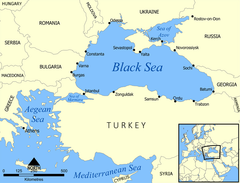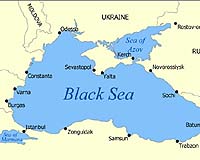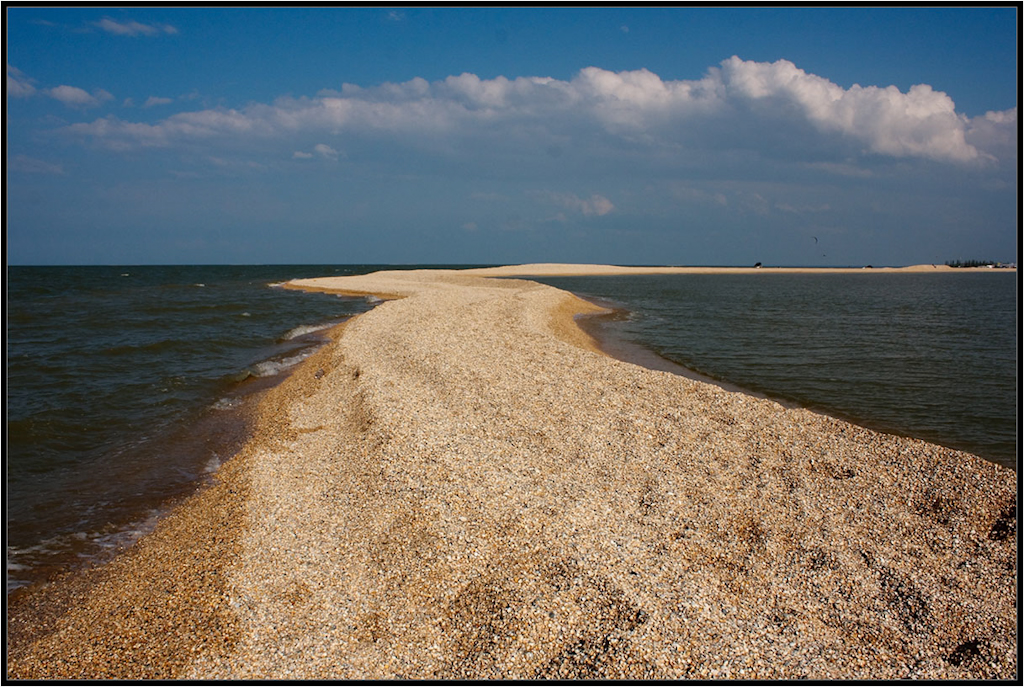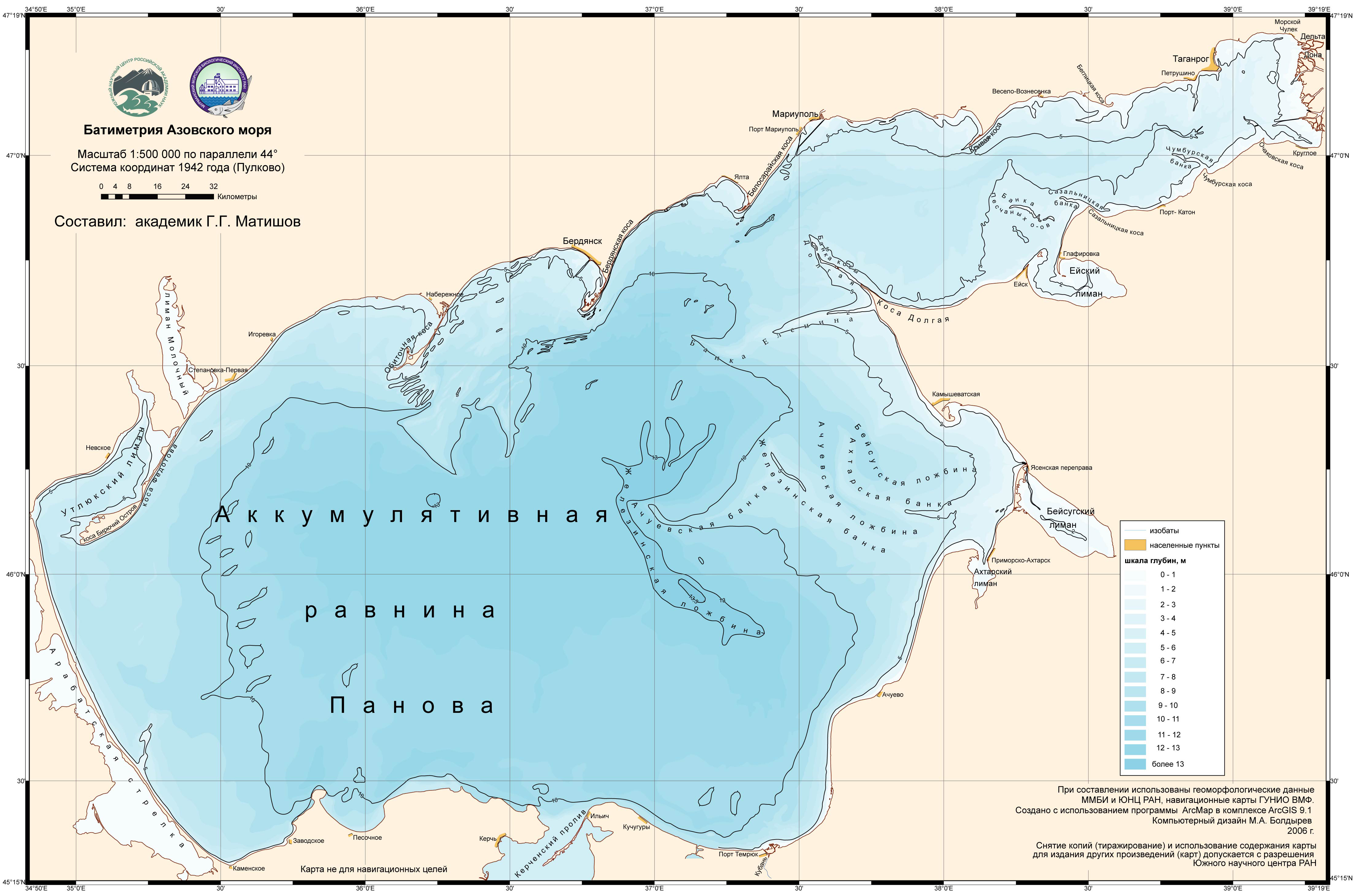sea of azov
For centuries this huge inland sea, linked with the Sea of Azov to the north-east and with the Mediterranean through the Dardanelles to the south-west, was the scene of military clashes and diplomatic manoeuvres. The ancient Greeks ventured into its vast expanses, in search of the grain of the Crimea and the legendary Golden Fleece of Colchis. Then the low-lying ships of the great Byzantine Empire ploughed its waters in all directions. Byzantine culture and Christian civilization were brought to Kiev and the old Russian cities. After the Empire begun to crumble in the eleventh century, the swift caravels of the Genoese merchants sailed the Black Sea, loaded with grain and slaves from the Crimea. Finally, in 1453, the Turks captured Constantinople and the Black Sea was sealed off from the Christian world.
The early Russian sovereigns were aware that their landlocked country had few prospects. In the sixteenth century Ivan the Terrible made an unsuccessful attempt to win a stretch of the Baltic coast for his Muscovy Empire and a century later Tsar Alexei Romanov turned his eye southwards to the Black sea but did not have the courage to start a war with the Turks. His daughter Sophia twice sent Russian troops to the Sea of Azov coast and both times had to withdraw them ingloriously.
The young Peter the Great in his turn twice marched to the Sea of Azov, in 1695 and 1696, and at the cost of tens of thousands of Russian lives finally captured the fortress of Azov at the mouth of the river Don, giving access to the sea. The Black Sea itself, however, still remained closed and in 1710 -1711, inspired by his success on the Baltic, Peter went to war with Turkey. Overwhelmed by Turkish troops on the River Prut, he was forced to barter his wife's jewellery to preserve his army. He also had to give up Azov.
The dream of the Black Sea, however, had become deeply rooted in the minds of Russian's governors. In 1735, under Empress Anna, Russia again went to war with the Turks, but after three years and loss of 100.000 lives an inconclusive peace agreement was signed with no gains, other than regaining Azov, for Russia.
It was Catherine the Great who brought the efforts of her predecessors to a brilliant finale. She declared war on Turkey in 1769 than she dispatched a large Russian flotilla to sail westwards around Europe and into the Mediterranean. On the same time Russian army marched south to the Black Sea, capturing the Crimea and going across the river Danube on the sea's western shores. The sight of the Russian fleet in close proximity to Constantinople, just as the victorious Russian army was nearing their capital, paralysed the Turks. The governments of Europe flew into a panic at the prospect of a strong Russia on Europe's southern flank and a peace was engineered. Catherine the Great gained the Crimea, with free access to the Black Sea, and unfortunate Turkey was saved.
Further wars and diplomatic moves followed and, although any significant Russian victory was generally contradicted by the European powers, by the mid- nineteenth century Russia had the northern and eastern shores of the Black Sea under its control. The three important towns of Yalta, Odessa and Sochi began to grow.
Whether you want wine-tasting or scuba diving, mountains or sea, to visit the Byzantine ruins of Khersoness, or the fabulous Livadia Palace near Yalta, home of the last of the Russian Tsars - or if you just want to relax on the beach and then while away a warm summer evening in a gourmet restaurant, Crimea has something for you.
The early Russian sovereigns were aware that their landlocked country had few prospects. In the sixteenth century Ivan the Terrible made an unsuccessful attempt to win a stretch of the Baltic coast for his Muscovy Empire and a century later Tsar Alexei Romanov turned his eye southwards to the Black sea but did not have the courage to start a war with the Turks. His daughter Sophia twice sent Russian troops to the Sea of Azov coast and both times had to withdraw them ingloriously.
The young Peter the Great in his turn twice marched to the Sea of Azov, in 1695 and 1696, and at the cost of tens of thousands of Russian lives finally captured the fortress of Azov at the mouth of the river Don, giving access to the sea. The Black Sea itself, however, still remained closed and in 1710 -1711, inspired by his success on the Baltic, Peter went to war with Turkey. Overwhelmed by Turkish troops on the River Prut, he was forced to barter his wife's jewellery to preserve his army. He also had to give up Azov.
The dream of the Black Sea, however, had become deeply rooted in the minds of Russian's governors. In 1735, under Empress Anna, Russia again went to war with the Turks, but after three years and loss of 100.000 lives an inconclusive peace agreement was signed with no gains, other than regaining Azov, for Russia.
It was Catherine the Great who brought the efforts of her predecessors to a brilliant finale. She declared war on Turkey in 1769 than she dispatched a large Russian flotilla to sail westwards around Europe and into the Mediterranean. On the same time Russian army marched south to the Black Sea, capturing the Crimea and going across the river Danube on the sea's western shores. The sight of the Russian fleet in close proximity to Constantinople, just as the victorious Russian army was nearing their capital, paralysed the Turks. The governments of Europe flew into a panic at the prospect of a strong Russia on Europe's southern flank and a peace was engineered. Catherine the Great gained the Crimea, with free access to the Black Sea, and unfortunate Turkey was saved.
Further wars and diplomatic moves followed and, although any significant Russian victory was generally contradicted by the European powers, by the mid- nineteenth century Russia had the northern and eastern shores of the Black Sea under its control. The three important towns of Yalta, Odessa and Sochi began to grow.
Whether you want wine-tasting or scuba diving, mountains or sea, to visit the Byzantine ruins of Khersoness, or the fabulous Livadia Palace near Yalta, home of the last of the Russian Tsars - or if you just want to relax on the beach and then while away a warm summer evening in a gourmet restaurant, Crimea has something for you.
sea of azov
sea of azov
sea of azov
sea of azov
sea of azov
sea of azov
sea of azov
sea of azov
sea of azov
sea of azov
sea of azov
sea of azov
sea of azov
sea of azov
sea of azov
sea of azov
















